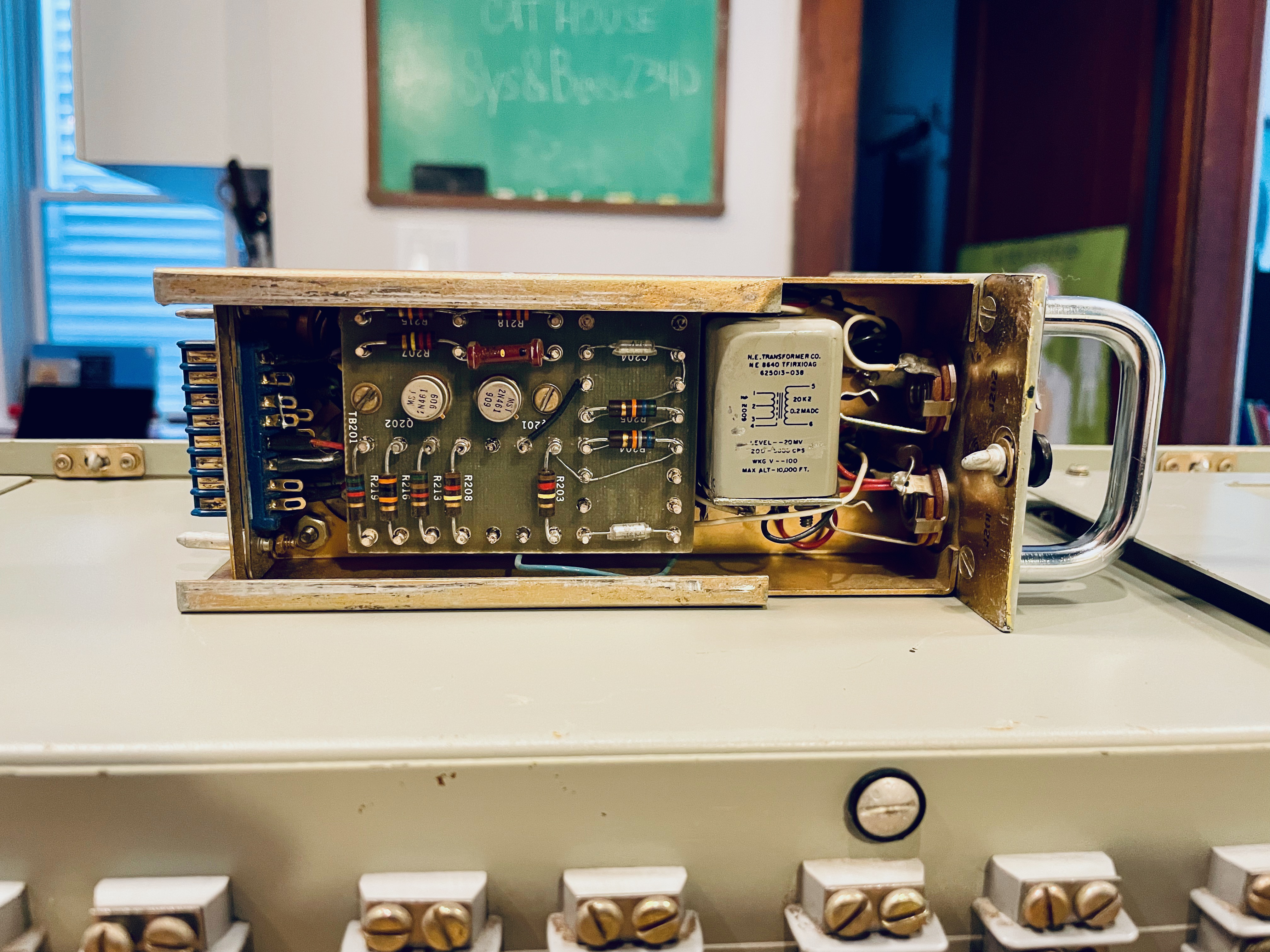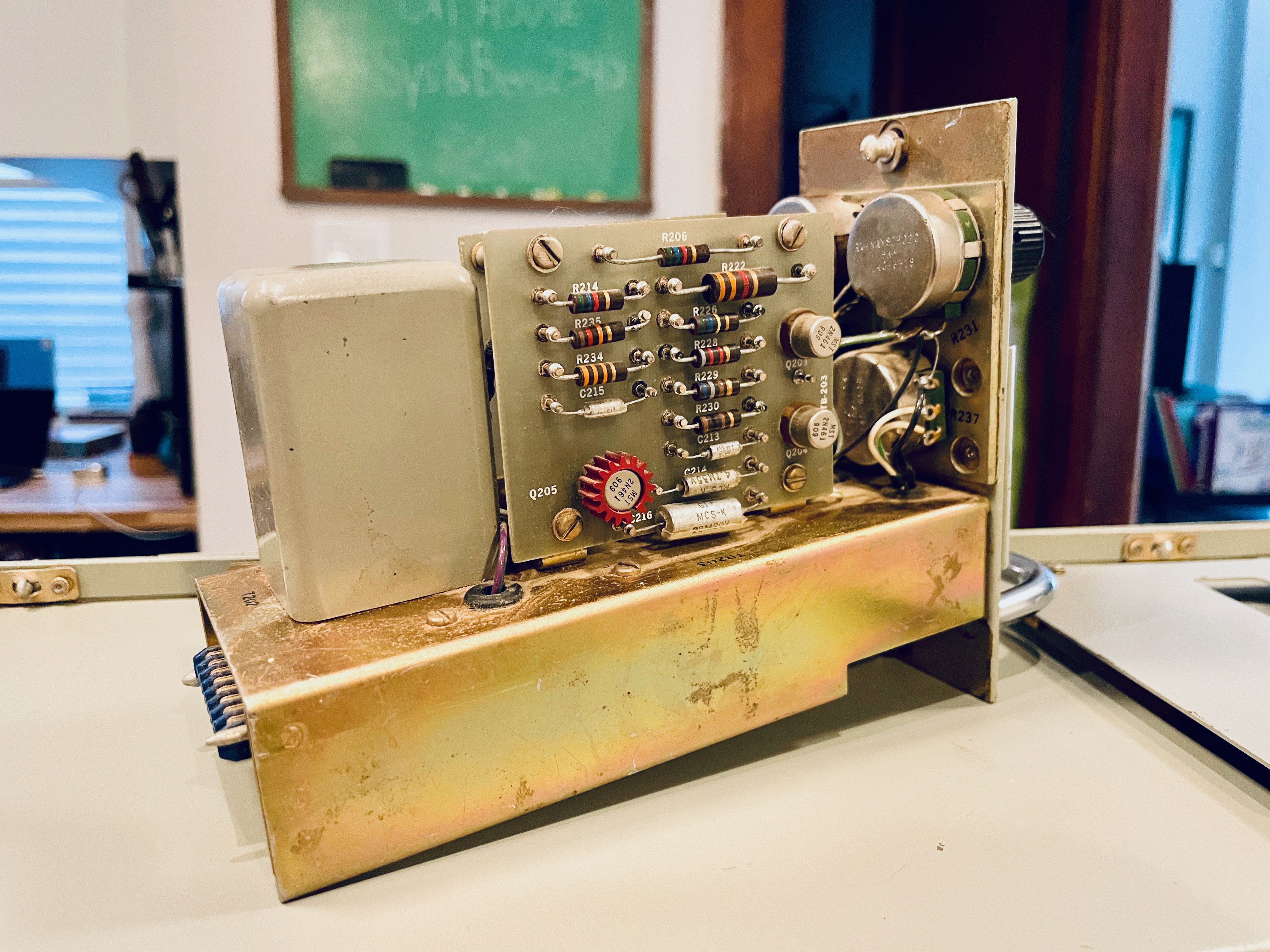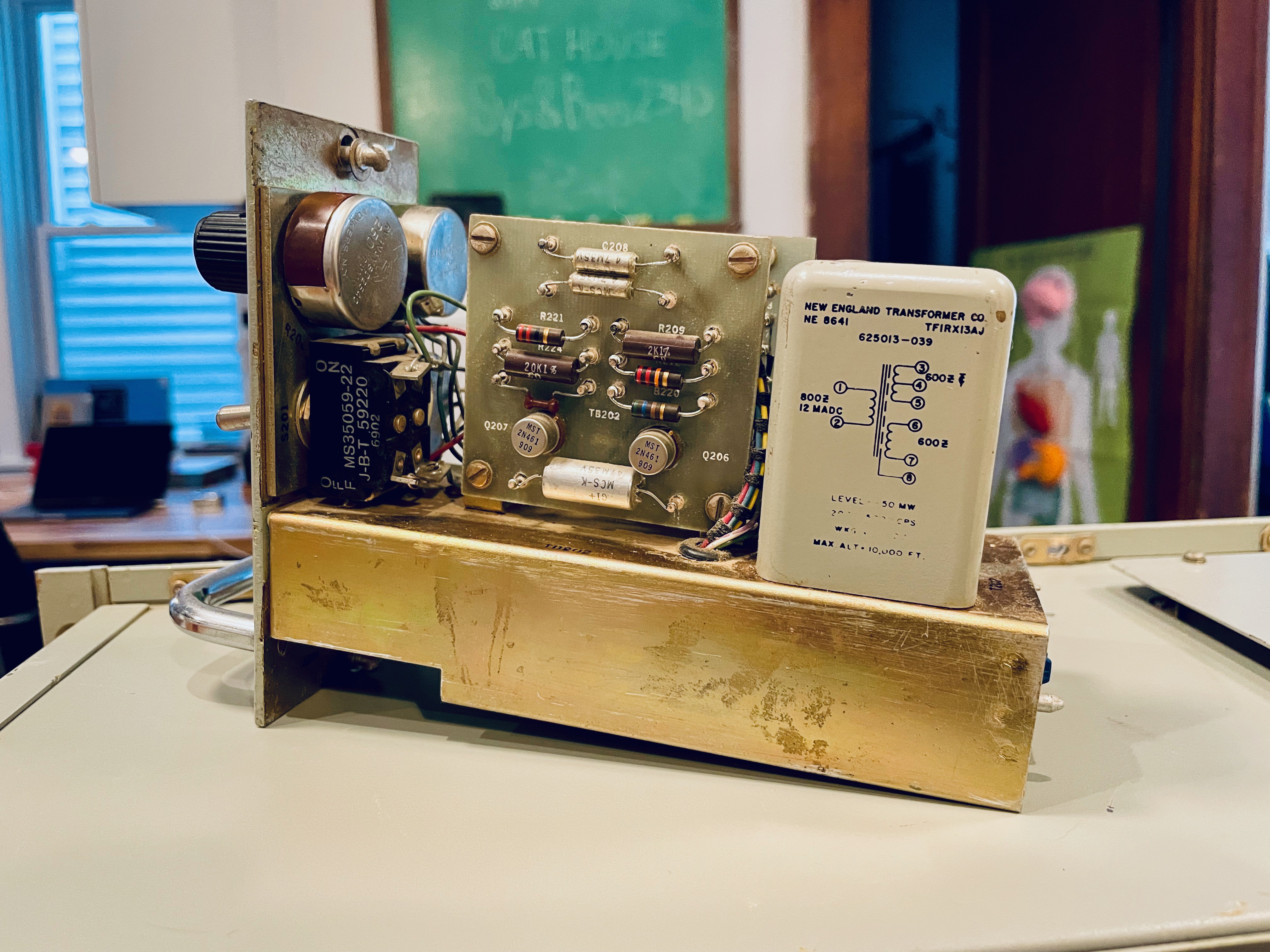beezer4
Well-known member
Hi all,
I'm starting work on a Melcor Navy Department - Bureau of Ships 5 compressor unit. From what I've read, these are from the early 1960s. My initial plan is the recap the unit, adjust frequency response and go from there. Looks like most, if not all the caps are Sprague mil-spec tantalum. I plan to replace the 3 capacitors in the power supply with electrolytic, but unsure if I should go through each unit and replace the tantalums as well.
Has anyone worked on these units before? or have a schematic?
There is a thread on groupdiy (link), but the schematic drawn there looks slightly different than my units.
Not sure how usable they will be for the studio, but figured I'd give them a go.




I'm starting work on a Melcor Navy Department - Bureau of Ships 5 compressor unit. From what I've read, these are from the early 1960s. My initial plan is the recap the unit, adjust frequency response and go from there. Looks like most, if not all the caps are Sprague mil-spec tantalum. I plan to replace the 3 capacitors in the power supply with electrolytic, but unsure if I should go through each unit and replace the tantalums as well.
Has anyone worked on these units before? or have a schematic?
There is a thread on groupdiy (link), but the schematic drawn there looks slightly different than my units.
Not sure how usable they will be for the studio, but figured I'd give them a go.












![Electronics Soldering Iron Kit, [Upgraded] Soldering Iron 110V 90W LCD Digital Portable Soldering Kit 180-480℃(356-896℉), Welding Tool with ON/OFF Switch, Auto-sleep, Thermostatic Design](https://m.media-amazon.com/images/I/41gRDnlyfJS._SL500_.jpg)





























